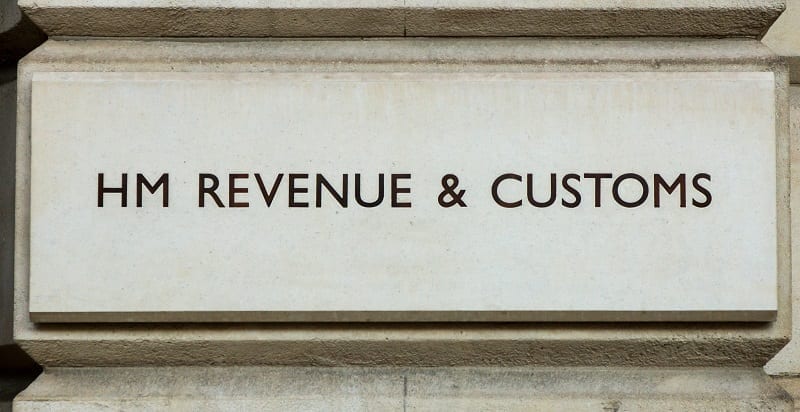Determining whether a worker engaged off-payroll (either directly on a self-employed basis, or through a limited company) should be treated as an employee for tax purposes,…
Updated: Coronavirus Job Retention Scheme – analysis of changes from 1 July
Following on from our recent blog highlighting the key changes to the coronavirus job retention scheme, this article is intended to provide some further detail and insight in to the changes announced.
From 1 July, employers will be able to bring employees back to work according to the needs of the business. Provided the employee is in agreement and their contract allows, they can be brought back to work partially and remain furloughed for the remainder of their normal working time.
There will be no minimum length of time the employees are required to be furloughed and employers can have the employees work any amount of time or any shift pattern they require.
Access to the furlough grant will only be available for those employees who have been furloughed for a minimum continuous period of three weeks between 1 March 2020 and 30 June 2020. This means the last day a new employee could have been furloughed was 10 June. The other prerequisite requirements of the original scheme i.e. included on a real time information submission to HMRC during 2019/20 and no later than 19 March 2020, will also have needed to be met.
The only exception to the 30 June cut off will be where an employee returns from a period of statutory parental leave, meaning it would not have been possible to furlough them prior to 30 June.
PKF Francis Clark, along with other professional bodies, have asked the Treasury and HMRC to extend this exception to include those employees who are newly required to shield themselves – for instance, as a result of a recent medical diagnosis – however, no relaxation on this has yet been provided.
To be able to flexibly furlough employees, employers need to have agreed this with their employees in writing and will need to:
- Make sure that the agreement is consistent with employment, equality and discrimination laws.
- Keep a written record of the agreement for five years.
- Keep records of how many hours the employees have worked and the number of hours they are furloughed (i.e. not working).
As outlined above, if the commencement of the period of furlough after the 10 June is the first time the employee has been furloughed, subject to the parental leave exemption, no relief can be claimed under the current or revised scheme.
If the employee previously completed a three week consecutive period of furlough prior to 10 June, then relief would be available. However, as the recommencement of the furlough starts prior to the 1 July, the employee must remain on full-time furlough for the minimum three week period to have a qualifying claim – irrespective of this period going beyond the 1 July.
From 1 July, employers’ claims will be limited to the maximum number of employees previously included on a claim prior to 30 June.
To illustrate the point, assume an employer made who has made two claims under the scheme up to 30 June of:
- 10 employees claimed for on 1 May and
- 8 employees claimed on 27 June
The maximum number of employees able to be included in a claim by this employer from 1 July would be 10 employees. This is regardless of whether the employees claimed for in each claim were different employees and the total employees furloughed over the 1 March to 30 June period was higher than 10 employees (potentially up to 18 employees). The employer will be capped on their claim and can only receive a grant for up to 10 employees in a given period from 1 July.
If an employer furloughs an employee who is returning from statutory parental leave after 30 June, they can be added to the maximum number of employees a claim can be made in respect of. Building on the previous example, if the employer furloughed two employees who returned to the business from statutory parental leave in August, the claim for August and subsequent months could be for a maximum of 12 employees.
Until 31 July, the amount of the grant available will continue to be 80% of applicable wages, capped at £2,500, along with support with pension and employer national insurance costs.
From 1 August, the grant will cover 80% of applicable wages, capped at £2,500, but there will be no relief for employer national insurance or pension contributions (capped at 3% of qualifying earnings levels).
From 1 September, the scheme will require employers to contribute towards the employees’ furlough pay. Employees will continue to be required to receive 80% of their applicable pay, but 10% will need to be covered by the employer and 70% will continue to be covered by the grant.
For the final month of the scheme in October, the employer contribution will rise to 20%.
As a consequence of these changes, the maximum grant available for each employee will be:
- July: £2,500 plus employer national insurance and pension contributions
- August: £2,500
- September: £2,187.50
- October: £1,875
Given the varying levels of support which will be available in the period between July and October, claims will only be able to be made within the same calendar month. In addition, a claim period must cover a minimum period of 7 days, unless the claim is being split because of a month coming to an end, or beginning.
To put this in to context, it would be possible for an employer to have a claim period running from 1 – 7 July and a second from 8 – 31 July. However, it would not be possible to have a claim period running from the 29 July – 4 August, with the employer instead needing to split the claim between 29 – 31 July and then 1 – 4 August.
The guidance asks employers to match their claim period to their payroll reference period. However, as employers can still only make one claim for a given period, employers with multiple payrolls will struggle to achieve this. For instance, those who run both a fortnightly payroll and a monthly payroll, will find it hard to match their claim period to their payroll reference periods – particularly as claims must be restricted to calendar months.
The earliest an employer can make a claim is up to 14 days before your claim period end date.
In practice, employers may struggle to make claims this early without the need to amend the subsequently. Where employees have been flexibly furloughed, the employer may not be certain of the value of the claim until the end of the claim period, when they know the hours worked and hours of furlough of the employee.
Where an employee is under a flexible furlough arrangement, the basis of the claim will change from looking at days of furlough and will instead look at the number of hours of furlough. As a consequence of this shift, the way in which the claim is calculated is completely different from what we have seen in the scheme to date.
The revised calculation also introduces the concept of ‘usual hours’ which will need to be identified and separately calculated to be able to then calculate the furlough pay grant.
To arrive at the number of furlough hours that can be claimed for, employers will need to deduct the actual hours worked in the period from the calculated usual hours. The balance of this calculation is then the number of furlough hours the employer can claim for.
For employees who are fully furloughed, the guidance confirms that this step in the calculation can be ignored and the claim will continue to be calculated using the maximum amount method currently used.
As with the current scheme, there are different methods to determine usual hours depending on the type of work undertaken by the employee. The guidance sets out how usual hours are to be calculated, but it should be noted that this will be an unenviable and likely time consuming task for employers.
The guidance defines the different types of work and each type of work has its own calculation of usual hours. The work types are distinguished as:
- Employees with fixed hours
- Employees with varying hours
- Piece or task rate workers
Employees with fixed hours
The usual hours for an employee with fixed hours is calculated with reference to the number of hours the employee was contracted for (not actually worked) at the end of the last pay period on or before 19 March 2020. The number of hours are then divided by the ‘repeating shift pattern’ and then multiplied by the number of days in the claim period, before then rounded up to the next whole number.
The idea of the repeating shift pattern is to address situations when an employee may not work a typical Monday to Friday, and instead work a ‘nine day fortnight’ or ‘three on/three off’. For clarity, the repeating shift pattern for these three scenarios would be seven days, fourteen days and six days respectively.
Employees with varying hours
For employees with varying hours, the usual hour’s calculation is even more complex, with the calculation being the higher of:
- The average hours worked in the 2019/20 tax year, up to the day prior to the employee being placed on furlough, if furloughed during the 2019/20 tax year, and
- The corresponding hours in the calendar period in the 2019/20 tax year.
As a consequence employers with employees on varying hours will, as a starting point, need to know both the hours worked of each employee for the entirety of the 2019/20 tax year and specific hours for the equivalent period in the 2019/20 tax year, to the period of claim.
Employees undertaking piece rate or task based work
If possible, the guidance asks employers to follow the same calculation as those with varying hours. If this is not possible – and for those employee’s paid on a ‘per widget’ basis, employers are unlikely to need or have kept records of the number of hours worked, the guidance asks employers to estimate the hours based on the number of ‘pieces’ they produced and compare this to the ‘average rate of work per hour’ used for national minimum wage purposes.
While at first glance this appears to mirror the existing scheme, the concept of minimum furlough pay is a key move away from the current scheme. Up until 1 July, employers can decide what to pay their employees while on furlough, but must cap any claim to the amount actually paid to the employee.
From 1 July, employers need to ensure they have actually paid minimum furlough pay to have a valid claim. Given the added complexity involved in calculating minimum furlough pay, along with the figures that feed into the calculation (such as usual hours), this requirement puts extra pressure on employers to ensure there are no errors in their calculations for risk of having to repay the grant to HMRC.
The minimum furlough pay is calculated by taking the lesser of:
- 80% of their usual wage
- The maximum wage amount (£2,500 for July, reducing to £1,875 by October)
The amount is then multiplied by the employee’s furloughed hours for the period, before being divided by their usual hours. The result is the minimum amount you must pay your employee for the hours they spend on furlough in the claim period.
As outlined above, a grant claim towards a furloughed employee’s employer national insurance and pension contribution will only be possible for the month of July. In addition, the pension contribution grant will continue to be capped at the minimum contribution required under auto-enrolment, using the ‘qualifying earnings’ method of calculating the contribution.
Where the employee has been flexibly furloughed, the claim will be further limited to apportion the amount between the furlough hours and working hours.
No, should the employer not be in a position to bring the employee back to work, they will be able to continue furloughing them on a full-time basis.
If employees are on full-time furlough, the other conditions of the 1 July will be applicable. In practice this will mean there will be differences from claims under the current scheme, such as:
- The grant available however will be limited to the new maximum outlined in the guidance
- Claims will need to limited to calendar month basis
- There will no requirement for the employee to be fully furloughed for a 3 week period as of 1 July
- There will be a cap on overall number of claimants includes those on full furlough
- Employees will need to be paid the minimum furlough amounts to qualify. Until 30 June, claims have been capped at the lower of 80% of normal pay and amount actually paid to the employee.
By 31 May HMRC had 1.07m employers that had made a claim, on behalf of 8.7m employments, and these claims totalled £17.5 billion.
The huge amounts of money involved means that HMRC will undoubtedly be looking to review these claims when they undertake any future employer compliance activity and will look to recover any over-claims of the CJRS grant.
Where an employer knows they have made a mistake with a claim or are concerned they might have, it would be better to check and then, if necessary, follow HMRC’s guidance and pay it back now. Do not wait for HMRC to review the claim and take formal action; with everything else this might bring for a business in time, cost and even unwanted publicity.
Link to the guidance can be found here.
The new scheme has added much asked for flexibility, but with that flexibility there are additional financial and time costs to the employer. Therefore it is imperative that employers understand what this means to their business before making a claim.

FEATURING: Steve Ashworth
Before joining the Bristol office of PKF Francis Clark in July 2019, Steve started his career at HMRC over 30 years ago and then spent… read more



